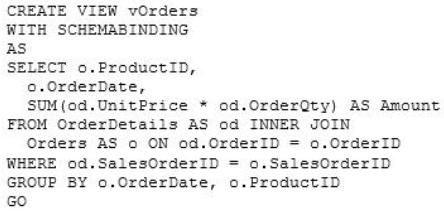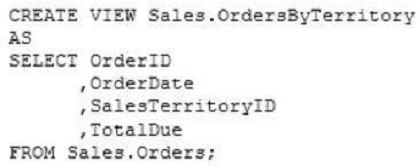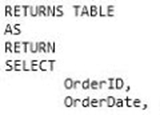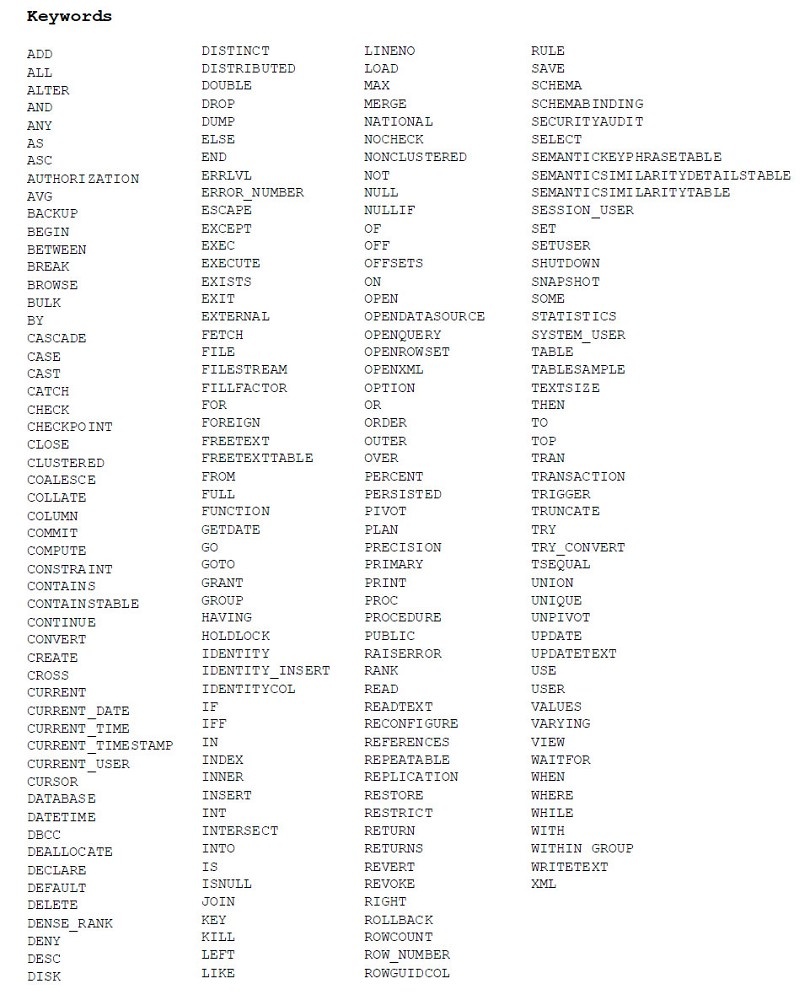Белорусско-Савеловский
3-я ул. Ямского Поля, д. 32, 1-й подъезд, 5-й этаж
Радио
ул. Радио, д.24, корпус 1, 2-ой подъезд, 2-ой этаж
Таганский
ул. Воронцовская, д. 35Б, корп.2, 5-ый этаж
Бауманский
ул. Бауманская, д. 6, стр. 2, бизнес-центр «Виктория Плаза», 4-й этаж
MCSA Querying Microsoft SQL Server 2012/2014 (70-461) Exam — ITExams
70-461 Exam Info
Microsoft’s 70-461 actual exam material brought to you by ITExams group of certification experts.
View all 70-461 actual exam questions, answers and explanations for free.
- Exam Code: 70-461
- Exam Title: MCSA Querying Microsoft SQL Server 2012/2014
- Vendor: Microsoft
- Exam Questions: 258
- Last Updated: March 9th, 2023
Go
To 70-461 Questions
Table of Contents
- Overview
- Skills Measured
- Preparation Materials
- Community
- Related Forum Posts
This article is part of the SQL Server 2012 Exam series.
Overview
| Language(s): | English, German, French, Portuguese (Brazil), Japanese, Chinese (Simplified) |
| Audience(s): | IT Professionals |
| Technology: | Microsoft SQL Server 2012 |
| Type: | Proctored Exam |
Audience Profile
This exam is intended for SQL Server database administrators, system engineers, and developers with two or more years of experience, who are seeking to validate their skills and knowledge in writing queries.
Skills Measured
Create database objects (24%)
-
Create and alter tables using T-SQL syntax (simple statements)
-
Create tables without using the built in tools; ALTER; DROP; ALTER COLUMN; CREATE
-
-
Create and alter views (simple statements)
-
Create indexed views; create views without using the built in tools; CREATE, ALTER, DROP
-
-
Design views
-
Ensure code non regression by keeping consistent signature for procedure, views and function (interfaces); security implications
-
-
Create and modify constraints (simple statements)
-
Create constraints on tables; define constraints; unique constraints; default constraints; primary and foreign key constraints
-
-
Create and alter DML triggers.
-
Inserted and deleted tables; nested triggers; types of triggers; update functions; handle multiple rows in a session; performance implications of triggers
-
Work with data (27%)
-
Query data by using SELECT statements
-
Use the ranking function to select top(X) rows for multiple categories in a single query; write and perform queries efficiently using the new (SQL 2005/8->) code items such as synonyms, and joins (except, intersect); implement logic which uses dynamic SQL
and system metadata; write efficient, technically complex SQL queries, including all types of joins versus the use of derived tables; determine what code may or may not execute based on the tables provided; given a table with constraints, determine which statement
set would load a table; use and understand different data access technologies; case versus isnull versus coalesce
-
-
Implement sub-queries
-
Identify problematic elements in query plans; pivot and unpivot; apply operator; cte statement; with statement
-
-
Implement data types
-
Use appropriate data; understand the uses and limitations of each data type; impact of GUID (newid, newsequentialid) on database performance, when to use what data type for columns
-
-
Implement aggregate queries
-
New analytic functions; grouping sets; spatial aggregates; apply ranking functions
-
-
Query and manage XML data
-
Understand XML datatypes and their schemas and interop w/, limitations and restrictions; implement XML schemas and handling of XML data; XML data: how to handle it in SQL Server and when and when not to use it, including XML namespaces; import and export
XML; XML indexing
-
Modify data (24%)
-
Create and alter stored procedures (simple statements)
-
Write a stored procedure to meet a given set of requirements; branching logic; create stored procedures and other programmatic objects; techniques for developing stored procedures; different types of storeproc result; create stored procedure for data access
layer; program stored procedures, triggers, functions with T-SQL
-
-
Modify data by using INSERT, UPDATE, and DELETE statements
-
Given a set of code with defaults, constraints, and triggers, determine the output of a set of DDL; know which SQL statements are best to solve common requirements; use output statement
-
-
Combine datasets
-
Difference between UNION and UNION all; case versus isnull versus coalesce; modify data by using MERGE statements
-
-
Work with functions
-
Understand deterministic, non-deterministic functions; scalar and table values; apply built-in scalar functions; create and alter user-defined functions (UDFs)
-
Troubleshoot and optimize (25%)
-
Optimize queries
-
Understand statistics; read query plans; plan guides; DMVs; hints; statistics IO; dynamic vs. parameterized queries; describe the different join types (HASH, MERGE, LOOP) and describe the scenarios they would be used in
-
-
Manage transactions
-
Mark a transaction; understand begin tran, commit, and rollback; implicit vs explicit transactions; isolation levels; scope and type of locks; trancount
-
-
Evaluate the use of row-based operations vs. set-based operations
-
When to use cursors; impact of scalar UDFs; combine multiple DML operations
-
-
Implement error handling
-
Implement try/catch/throw; use set based rather than row based logic; transaction management
-
Preparation Materials
Learning Plans and Classroom Training
- 20461C: Querying Microsoft SQL Server (5 days)
Microsoft E-Learning
- Training Kit — Companion Content
- Database Sample — AdventureWorks2012
Books
- Training Kit (Exam 70-461): Querying Microsoft SQL Server 2012
Practice Tests
- MVA — Querying Microsoft SQL Server 2012 Databases Jump Start
Microsoft Vendor Approved Courseware
- Kaplan SelfTest
- MeasureUp
- Transcender
Community
- Wiki: Training and Certification Portal (en-US)
- Forum: Training and Certification (en-US)
- Microsoft Learning Community
Related Forum Posts
If one of the posts in the following threads helps you answering your question, please vote them as helpful so other community members will find helpful information faster.
- Born To Learn: Database Certification Study Group — 70-461
You develop a Microsoft SQL Server database that supports an application. The application contains a table that has the following definition:
CREATE TABLE Inventory —
(ItemID int NOT NULL PRIMARY KEY,
ItemsInStore int NOT NULL,
ItemsInWarehouse int NOT NULL)
You need to create a computed column that returns the sum total of the ItemsInStore and ItemsInWarehouse values for each row.
Which Transact-SQL statement should you use?
-
A.
ALTER TABLE Inventory ADD TotalItems AS ItemsInStore + ItemsInWarehouse
-
B.
ALTER TABLE Inventory ADD ItemsInStore — ItemsInWarehouse = TotalItemss
-
C.
ALTER TABLEInventory ADD TotalItems = ItemsInStore + ItemsInWarehouse
-
D.
ALTER TABLE Inventory ADD TotalItems AS SUM(ItemsInStore, ItemsInWarehouse);
Reveal Solution
Hide Solution
Discussion
1
Correct Answer:
A
🗳️
Reference:
http://technet.microsoft.com/en-us/library/ms190273.aspx
You develop a Microsoft SQL Server database. You create a view from the Orders and OrderDetails tables by using the following definition.
You need to improve the performance of the view by persisting data to disk. What should you do?
-
A.
Create anINSTEAD OFtrigger on the view.
-
B.
Create anAFTERtrigger on the view.
-
C.
Modify the view to use theWITH VIEW_METADATAclause.
-
D.
Create a clustered index on the view.
Reveal Solution
Hide Solution
Discussion
Correct Answer:
D
🗳️
Reference:
http://msdn.microsoft.com/en-us/library/ms188783.aspx
Note: This question is part of a series of questions that use the same set of answer choices. An answer choice may be correct for more than one question in the series.
You develop a database for a travel application. You need to design tables and other database objects.
You create the Airline_Schedules table.
You need to store the departure and arrival dates and times of flights along with time zone information.
What should you do?
-
A.
Use the CAST function.
-
B.
Use the DATE data type.
-
C.
Use the FORMAT function.
-
D.
Use an appropriate collation.
-
E.
Use a user-defined table type.
-
F.
Use the VARBINARY data type.
-
G.
Use the DATETIME data type.
-
H.
Use the DATETIME2 data type.
-
I.
Use the DATETIMEOFFSET data type.
-
J.
Use the TODATETIMEOFFSET function.
Reveal Solution
Hide Solution
Discussion
5
Correct Answer:
I
🗳️
Reference:
http://msdn.microsoft.com/en-us/library/ff848733.aspx
http://msdn.microsoft.com/en-us/library/bb630289.aspx
Note: This question is part of a series of questions that use the same set of answer choices. An answer choice may be correct for more than one question in the series.
You develop a database for a travel application. You need to design tables and other database objects.
You create a stored procedure. You need to supply the stored procedure with multiple event names and their dates as parameters.
What should you do?
-
A.
Use the CAST function.
-
B.
Use the DATE data type.
-
C.
Use the FORMAT function.
-
D.
Use an appropriate collation.
-
E.
Use a user-defined table type.
-
F.
Use the VARBINARY data type.
-
G.
Use the DATETIME data type.
-
H.
Use the DATETIME2 data type.
-
I.
Use the DATETIMEOFFSET data type.
-
J.
Use the TODATETIMEOFFSET function.
Reveal Solution
Hide Solution
Discussion
Correct Answer:
E
🗳️
SIMULATION —
You have a view that was created by using the following code:
You need to create an inline table-valued function named Sales.fn_OrdersByTerritory, which must meet the following requirements:
✑ Accept the @T integer parameter.
✑ Use one-part names to reference columns.
Filter the query results by SalesTerritoryID.
✑ Return the columns in the same order as the order used in OrdersByTerritoryView.
Part of the correct Transact-SQL has been provided in the answer area below. Enter the Transact-SQL in the answer area that resolves the problem and meets the stated goals or requirements. You can add Transact-SQL within the Transact-SQL segment that has been provided as well as below it.
Reveal Solution
Hide Solution
Discussion
Correct Answer:
Please review the explanation part for this answer.
CREATE FUNCTION Sales.fn_OrdersByTerritory (@T int)
RETURNS TABLE —
AS —
RETURN —
(
SELECT —
OrderID,
OrderDate,
SalesTerritoryID,
TotalDue —
FROM Sales.OrdersByTerritory —
WHERE [email protected] —
)
> www.ATraining.ru > Microsoft > Экзамен 070-461
Querying Microsoft SQL Server 2012/2014
Актуальность теста Microsoft 070-461
Этот экзамен действителен и не заменён каким-либо более новым.
Сертификации
Экзамен Microsoft 070-461 требуется для получения:
- Сертификация MCSA SQL Server 2012 or 2014 — Microsoft Certified Solutions Associate (MCSA) : SQL Server 2012 / 2014
Курсы для подготовки
К тестированию Microsoft 070-461 готовят курсы:
- Перейти к списку курсов Microsoft





